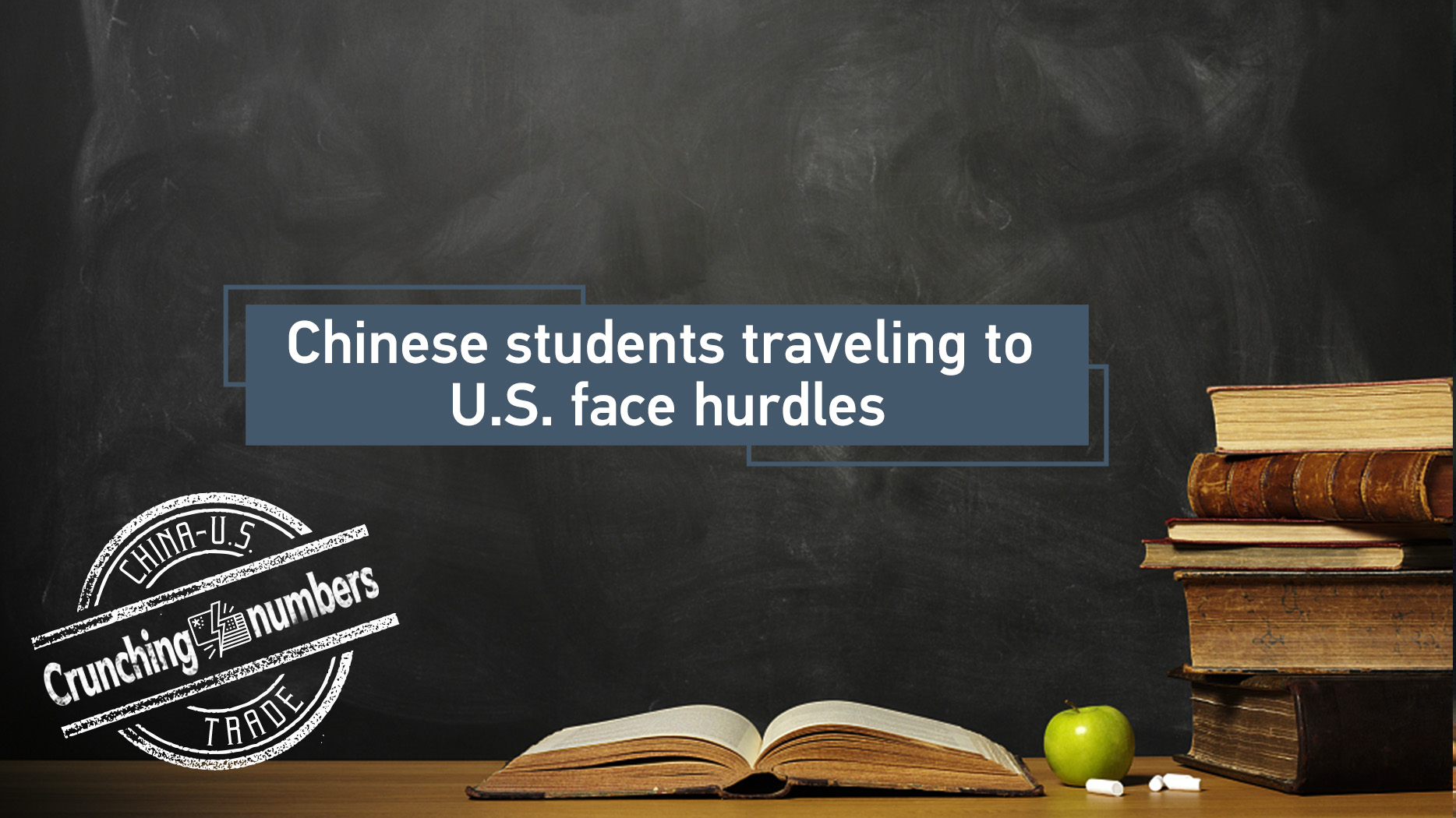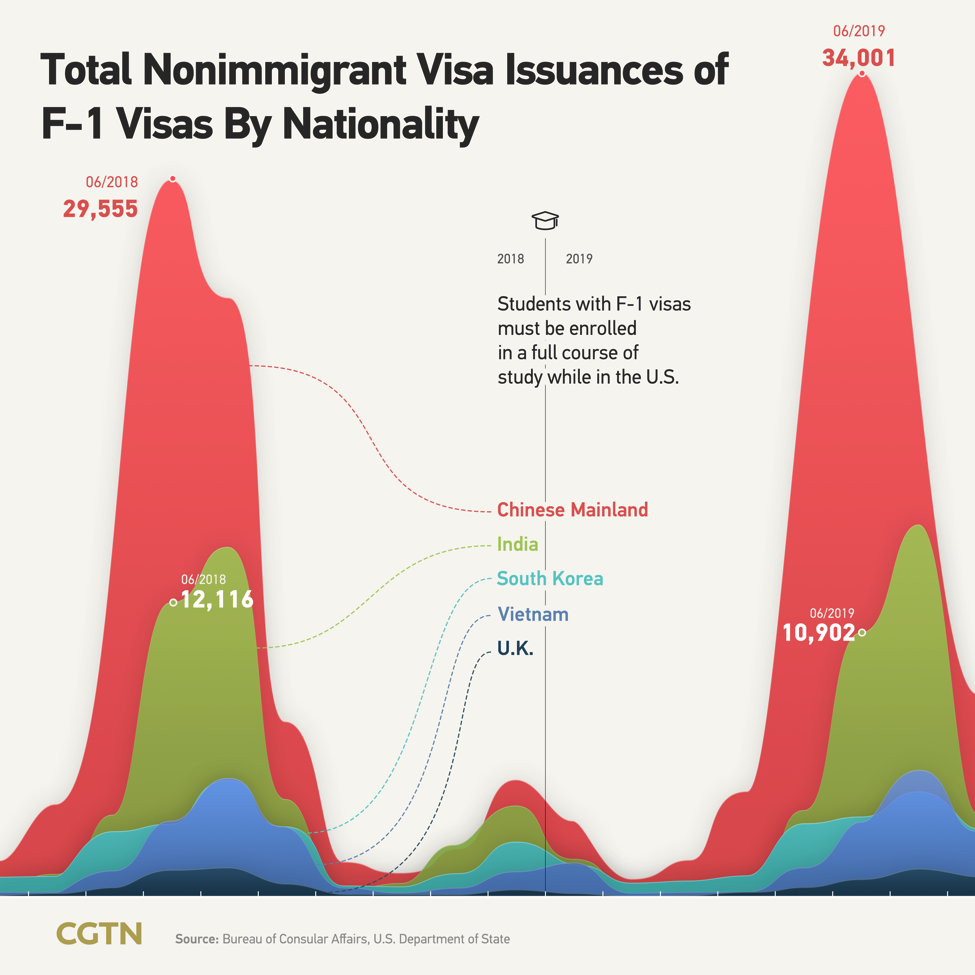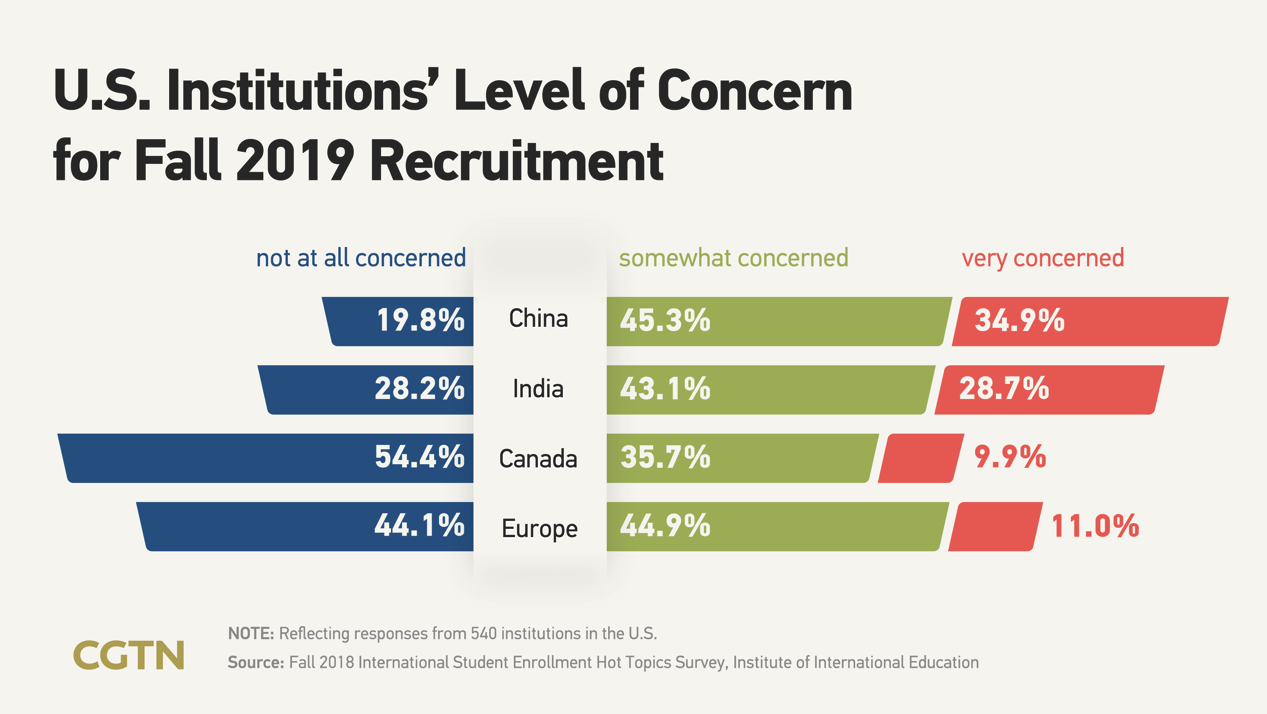
Over the past year, an increase in visa delays and rejections for Chinese students studying in the U.S. aroused widespread discussion. However, some of those concerns were apparently addressed following remarks made by U.S. President Donald Trump in a meeting with Chinese delegates in October.
"We're going to be very good to Chinese students… There was [sic] false rumors going on that we were going to close the schools to China. That is so false. It's just false," said the president, according to a transcript on the White House website.
In terms of statistics, there is no doubt that Chinese students are hugely important to U.S. universities, with a reduction in enrolled Chinese students causing a deep concern for the American higher education sector.
According to the Association of International Educators, the 1,094,792 international students studying at U.S. colleges and universities during the 2017-2018 academic year contributed 39 billion U.S. dollars to the U.S. economy, supporting more than 455,000 jobs. More than one third of those students were Chinese.
Unexpected visa policy trends
Data published earlier this year for the first quarter of 2019 by China's Ministry of Education showed a notable 13.5 percent rise in rejected Chinese applications for U.S. student visas, compared with 3.2 percent in 2018.
All rejections were students on Chinese government scholarships, particularly those in STEM (Science, Technology, Engineering, Mathematics) fields.
However, as the data below show, the overall picture tells a different story.

In June this year, 34,001 non-immigrant F-1 U.S. visas were issued to Chinese mainland students, up 15 percent year-on-year. In contrast, successful Indian F-1 visa applicants fell 10 percent over the same period.
Chinese students, despite the headlines, may not have been the top target. As these figures indicate, political rhetoric does not always translate into practical influence.
For example, in STEM subjects, an area where the U.S. government has looked to restrict visa access, Indian international students took a bigger hit. When it comes to STEM, Indian students are much more exposed to changes in visa policy than Chinese students.
Data provided by the Institute of International Education (IIE) show as many as 81.1 percent of all Indian students in the U.S. during the 2017-18 school year were studying STEM subjects. For Chinese students, STEM accounted for just 46 percent.
Over that period, the number of Indian students in the U.S. was more than half than that of Chinese students, and India followed China in almost every ranking list of international student enrollment. However, Indian students may have faced visa restrictions similar to their Chinese counterparts, if not heavier.
What's more, the drop in Indian students means they will not be able to fill any gap left by Chinese international students at U.S. universities, amid declining enrollments.
Decline in total international students
Unlike other sectors, education won't receive subsidies or financial support from the government to address the effects of the China-U.S. trade war. However, enrolling sufficient student numbers is always a top priority for any university. Before calculating any possible reduction in tuition fee revenue, a consecutive decline in U.S. total international student enrollment already raises a red flag.
California was the top host state to international students in 2017-18, according to the IIE. The University of Southern California (USC) drew as many as 16,075 international students that year, second only to New York University. As of June 30, 2018, USC's Fiscal Year 2018 Results showed revenue from student tuition totaled 2.043 billion U.S. dollars in 2018, an increase of 7.6 percent.
Nevertheless, wide declines were revealed by USC's 2019 International Enrollment Fact Sheet in a list of enrollment by place of origin. Among the top 15, there were 11 countries and regions showing a drop in international students enrolling at USC, with declines of as much as 15 percent.

In fall 2019, China was the biggest factor in USC's overall enrollment increase, with a 10.66 percent rise in total student numbers and an overall share of 52.6 percent of USC's international students.
In fact, for U.S. institutions an unusual trend has emerged, with international student numbers largely declining for a second consecutive year. Total international student numbers decreased in fall 2017 by a rare 6.6 percent over the previous year, according to IIE.
Making up 33.2 percent of the overall international student body in 2017-18 in the U.S., Chinese students will still be key to filling in the gap and stemming the decline.
Institutional concern
How reliant are U.S. colleges on international students from China? A survey of staff shows concerns for falling numbers, particularly among Chinese students.

The results of the Fall 2018 International Student Enrollment Hot Topics Survey showed that, among 540 institutions, 48 percent saw declining applications from new Chinese students in 2019, and 42 percent for Indian students.
To address growing concerns, these institutions plan to prioritize international student outreach and recruitment in Asia, particularly China (65 percent) and India (51 percent).
As early as 2017, business and engineering colleges at the University of Illinois took out insurance to cover themselves against huge losses from any potential sudden drop in Chinese student numbers.
All these measures seem justifiable considering the significant contribution of Chinese students to the American education system.
Nearly 60 percent of all international students in the U.S. in 2017-18 received funding from their own savings and family support. One third of that group were Chinese, highlighting the growing role of the country's middle-class in cementing an irreplaceable position for Chinese students in the U.S. education system.
Author: Han Mo, Zuo lin, Huo Li, Liu Jing
Data Collection: Ru Suyan
Designer: Yu Pianyi
Copy editor: Nick Moore
Cover photo designer: Li Yueyun
Chief editor: Li Shou'en
Supervisor: Mei Yan